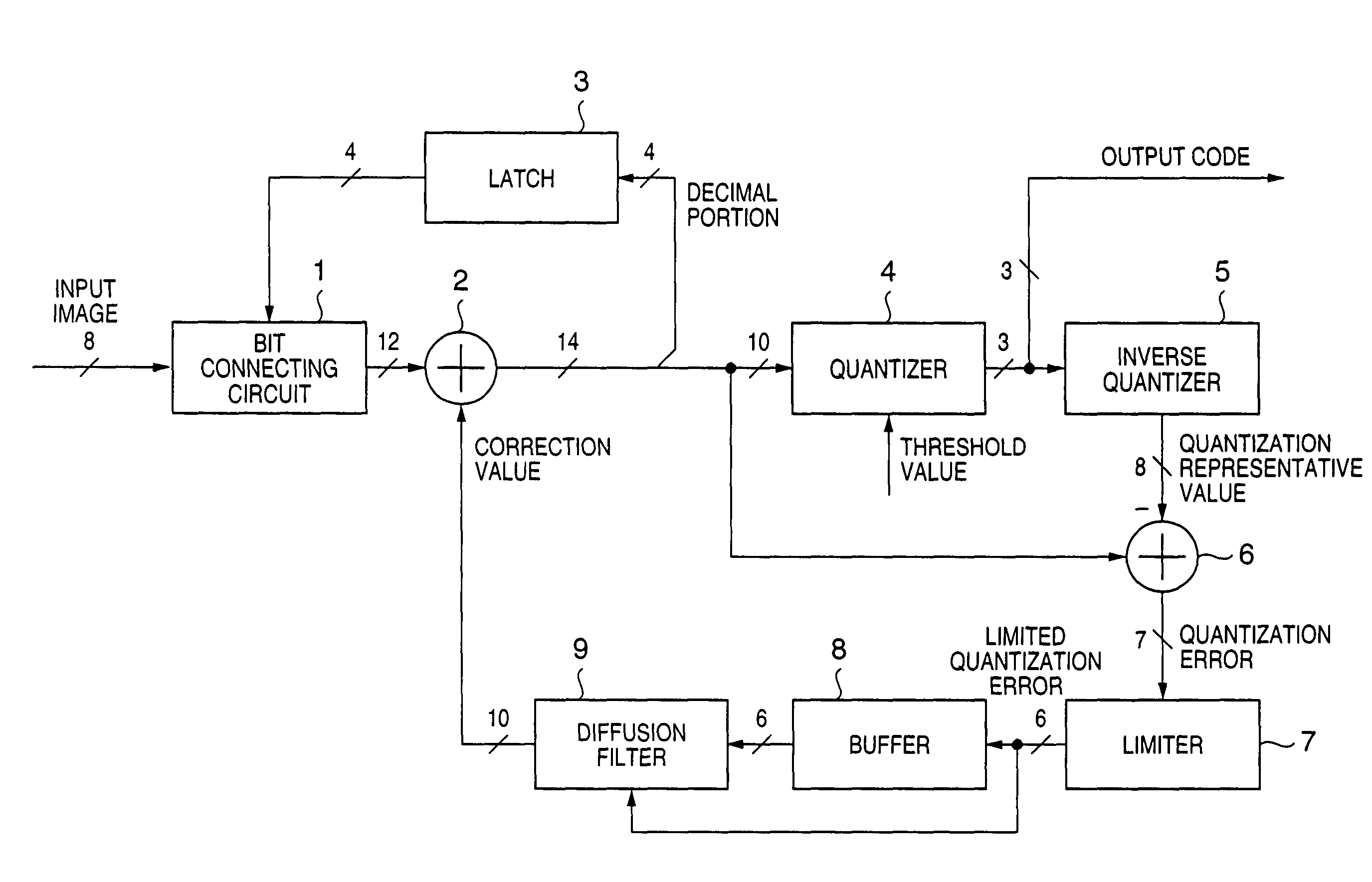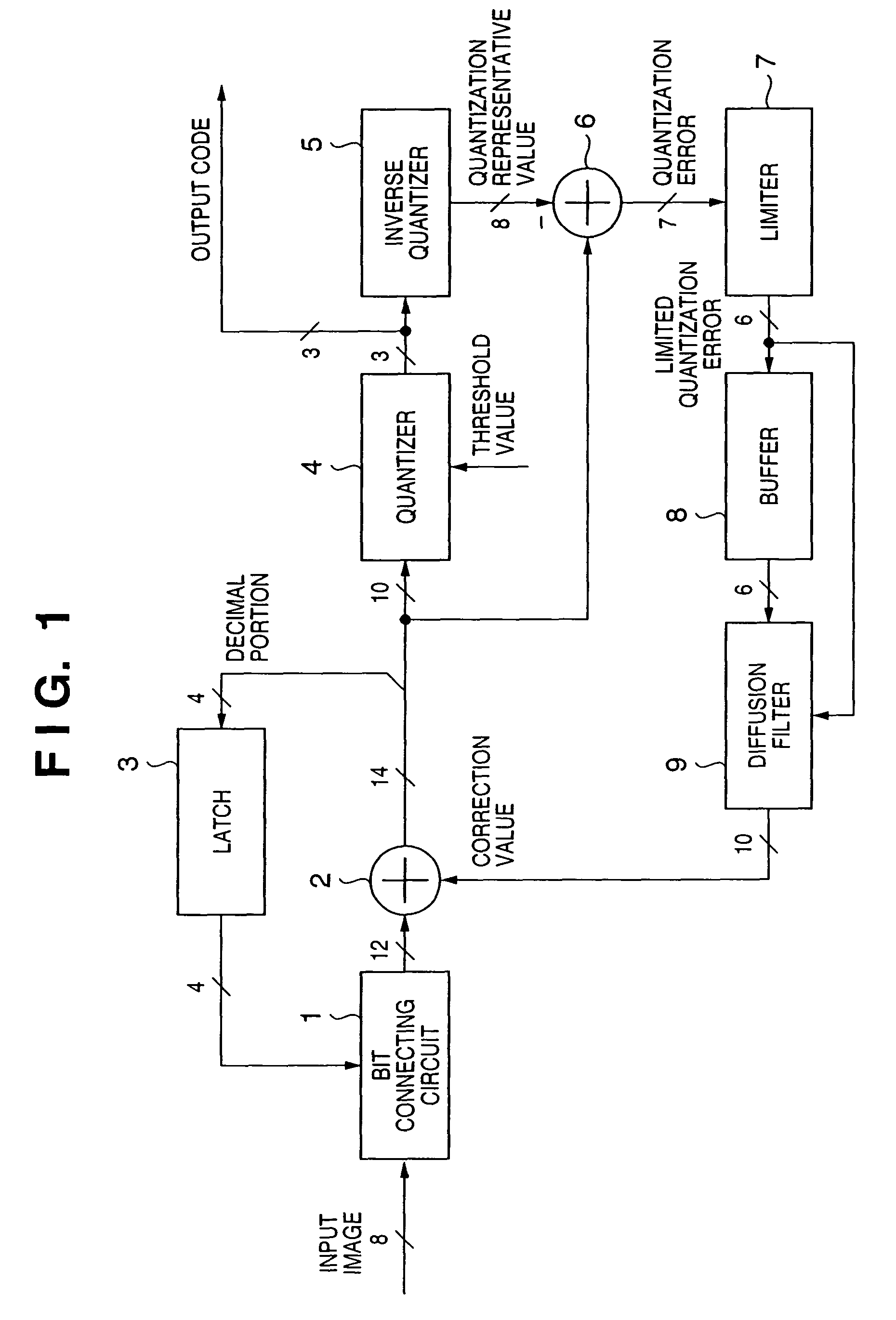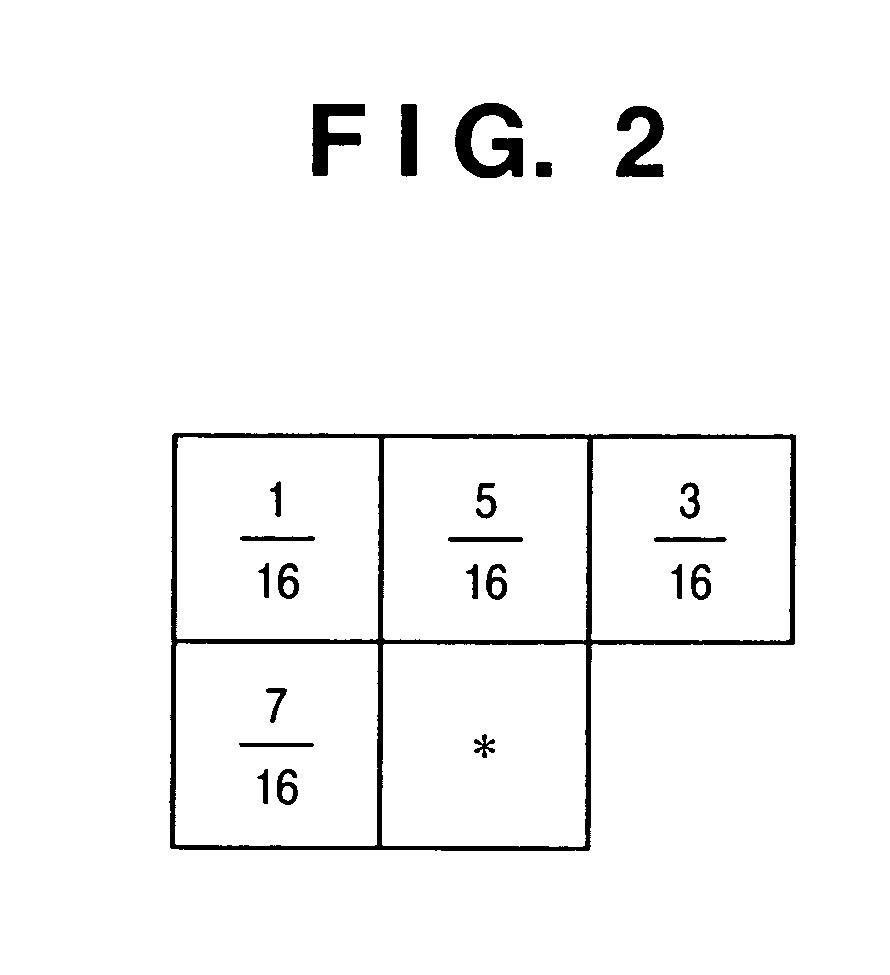Method and apparatus for image processing
a technology of image processing and buffer memory, applied in the field of method and apparatus for image processing, can solve the problems of the number of bits of the error buffer as large as 12, the distribution ratio changes, and the distribution ratio changes, and achieve the effect of decreasing the capacity requirement of the buffer memory
- Summary
- Abstract
- Description
- Claims
- Application Information
AI Technical Summary
Benefits of technology
Problems solved by technology
Method used
Image
Examples
first embodiment
[0049]An embodiment of the present invention is described below in detail with reference to the accompanying drawings. FIG. 1 is a block diagram for explaining the arrangement of an image processing apparatus according to a first embodiment of the present invention.
[0050]Referring to FIG. 1, a bit connecting circuit 1 connects the cumulative value of decimals from a latch 3 to the lower bits of input image data. An adder 2 adds a correction value from a diffusion filter 9 to the input image data. The latch 3 delays the decimal portion of the adder 2 by one pixel. A quantizer 4 compares the integral portion of the adder 2 with a threshold value and converts the integral portion into an output code. An inverse quantizer 5 generates a quantization representative value from the output code. A subtracter 6 subtracts the quantization representative value from the value immediately before quantization to generate a quantization error. A limiter 7 limits the quantization error from the subt...
second embodiment
[0061]FIG. 3 is a block diagram showing the arrangement of an image processing apparatus according to the second embodiment of the present invention. Referring to FIG. 3, reference numerals 11 and 12 denote adders; 13, a latch; 14, a quantizer; 15, an inverse quantizer; 16, a subtracter; 17, a limiter; 18, a line buffer; and 19, a diffusion filter. Only parts different from the first embodiment is described below.
[0062]In this embodiment, the number of bits of the latch 13 is extended by m bits, and not only the decimal portion but also m lower bits of the integral portion after error correction are cumulatively added, thereby decreasing the capacity of the line buffer 18.
[0063]Hence, as in the first embodiment, the decimal portion of the output from the latch 13 is connected to the lower bits of input image data. On the other hand, the m-bit integral portion is added to the input image by the adder 11. For this reason, the output after bit connection has 13 bits. The separated inte...
third embodiment
[0072]FIG. 4 is a block diagram for explaining the arrangement of an image processing apparatus according to the third embodiment of the present invention. Referring to FIG. 4, reference numeral 20 denotes a white / black pixel detector; 21, a latch; 22, a code replacement circuit; and 23, a quantization error replacement circuit. Only parts different from the second embodiment is described below.
[0073]The white / black pixel detector 20 detects white pixels (0 in the second embodiment) and black pixels (255 in the second embodiment) of input image data. The detection result is output to the latch 21 and replacement circuits 22 and 23.
[0074]When the white / black pixel detector 20 detects a white or black pixel, the latch 21 clears the latch to prevent error propagation to the next and subsequent pixels. Accordingly, any inappropriate result such as smear at a highlight portion or omission of a thin line due to unnecessary error propagation can be suppressed.
[0075]When a white pixel is de...
PUM
 Login to View More
Login to View More Abstract
Description
Claims
Application Information
 Login to View More
Login to View More - R&D
- Intellectual Property
- Life Sciences
- Materials
- Tech Scout
- Unparalleled Data Quality
- Higher Quality Content
- 60% Fewer Hallucinations
Browse by: Latest US Patents, China's latest patents, Technical Efficacy Thesaurus, Application Domain, Technology Topic, Popular Technical Reports.
© 2025 PatSnap. All rights reserved.Legal|Privacy policy|Modern Slavery Act Transparency Statement|Sitemap|About US| Contact US: help@patsnap.com



